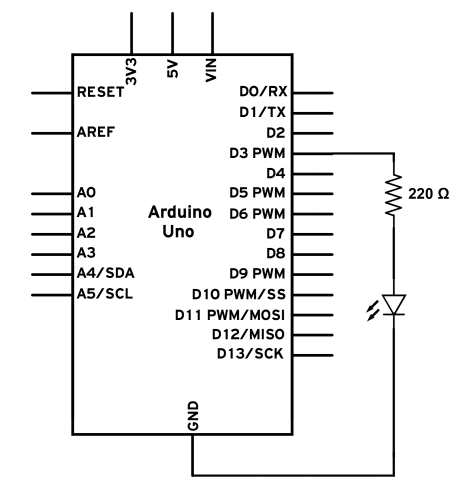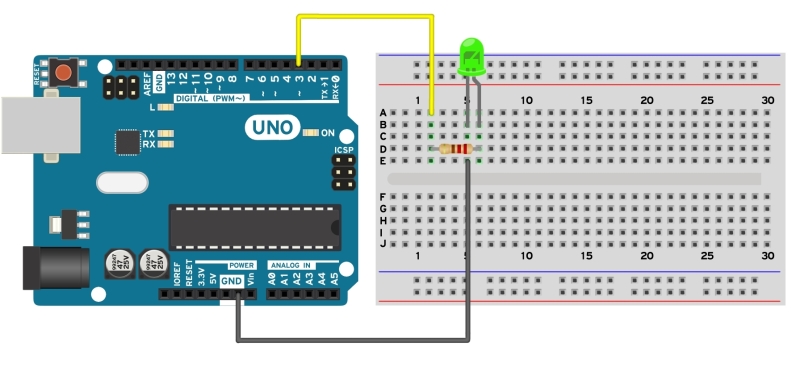The LED has two states: ON and OFF. But what if we want to adjust the brightness? How can we do that if we can only turn it ON or OFF? By turning it ON and OFF quickly.
We will use a technique called Pulse Width Modulation (PWM), which is built into the Arduino. It allows us to dim the LED with up to 256 settings.
We require the following ingredients for this recipe:
An Arduino board connected to the computer via USB
A breadboard and jumper wires
A regular LED
A resistor between 220–1,000 ohm
This recipe uses the same circuit as the Connecting an external LED recipe with a single difference, the pin used to connect the LED is not digital pin 2 but PWM pin 3.



